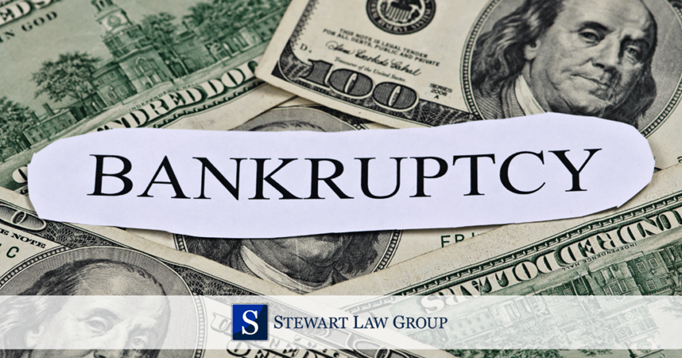For many Arizona residents struggling with debt, bankruptcy offers a path to regain financial stability and start fresh. Yet one of the first questions people ask is: how much does a bankruptcy cost? While bankruptcy is designed to provide relief, it does not come without expenses. From court filing fees to attorney costs and other related charges, understanding the financial commitment required can help individuals prepare for the process.
Filing Fees: The Starting Point
The initial cost of filing bankruptcy in Arizona is set by the federal court system, and these fees are standard regardless of where you live in the state. For a Chapter 7 bankruptcy, which is the most common type for individuals, the filing fee is a few hundred dollars. Chapter 13 bankruptcies, which involve repayment plans, carry a slightly lower filing fee, but the overall process tends to be more expensive in the long run due to the complexity of managing payment arrangements over several years.
These filing fees are non-negotiable and must be paid at the time of filing unless a fee waiver or installment plan is approved. For those with very low income, courts sometimes waive the filing fee altogether. Others may be allowed to pay the amount in installments, which eases the burden for households already facing severe financial stress.
Legal Representation Costs
Attorney fees typically make up the biggest portion of bankruptcy costs. While it is legally possible to file on your own, the bankruptcy process is complicated, involving detailed paperwork, strict deadlines, and mandatory court appearances. Most people hire a bankruptcy attorney because mistakes can cause delays, dismissals, or asset loss.
In Arizona, the cost of hiring an attorney varies depending on the type of bankruptcy. Chapter 7 attorney fees are usually more affordable, often ranging from under a thousand dollars to a few thousand, depending on the case complexity. Chapter 13 bankruptcies usually involve higher attorney fees since the process requires ongoing management of repayment plans that can last three to five years. These fees are often built into the repayment plan itself, allowing debtors to pay them over time instead of all at once.
Additional Expenses To Consider
Beyond filing and attorney fees, there are other costs associated with bankruptcy. Debtors are required to complete credit counseling before filing and a debtor education course after filing. These classes, which are designed to provide financial literacy and tools for managing money responsibly, carry modest fees of their own. While usually under $100, they are mandatory and add to the total cost of the process.
In some cases, individuals may also face costs for amending petitions, reopening a case, or submitting additional motions. While these fees are not part of every case, they can arise unexpectedly, and it is wise to budget for possible extras.
The Role Of Chapter Choice In Costs
One factor that significantly influences bankruptcy costs in Arizona is the type of bankruptcy chosen. In general, Chapter 7 bankruptcy is less costly and faster. It focuses on liquidating non-exempt assets to pay off creditors and typically concludes within a few months. On the other hand, Chapter 13 is designed for people with steady income who need to reorganize debt through a repayment plan. While filing fees may be slightly lower, the total cost of Chapter 13 is higher due to extended attorney involvement and longer case management.
This difference means that while Chapter 7 may seem costly upfront, it is often the less expensive option for individuals who qualify. Chapter 13 can provide valuable protections for assets like homes and cars, but those benefits come at a higher financial commitment.
The Value Of Professional Guidance
While the financial aspect of bankruptcy may feel overwhelming, it is important to remember that the cost should be weighed against the benefits. Bankruptcy can discharge thousands of dollars in unsecured debt, stop creditor harassment, and provide a structured path toward financial recovery. For many, the price of filing is small compared to the relief and fresh start it brings.
Attorneys also bring value beyond filing paperwork. They can negotiate with creditors, explain exemptions available under Arizona law, and ensure that the process goes as smoothly as possible. For individuals facing wage garnishment, foreclosure, or aggressive collection actions, the protection provided by filing bankruptcy with legal support can be life-changing.
Making Bankruptcy Affordable
Although bankruptcy costs are significant, there are ways to make the process more affordable. Courts allow installment payments for filing fees, and many attorneys provide payment plans tailored to their clients’ circumstances. In Chapter 13 cases, attorney fees are typically included in the repayment plan, spreading the cost over several years. For those with very limited income, fee waivers may be available for both court costs and required courses.
By exploring these options, individuals can manage the expense of bankruptcy without letting it become an additional financial burden. A bankruptcy attorney can establish eligibility for fee waivers, installment plans, or cheaper case tactics.
Conclusion: Cost As An Investment In Recovery
The true price of bankruptcy in Arizona extends beyond dollars and cents. While filing fees, attorney costs, and related expenses are unavoidable, they should be viewed as an investment in long-term financial health. Bankruptcy provides protection, relief, and the chance to rebuild credit over time. For those drowning in debt, the cost of doing nothing often far outweighs the cost of filing. Mounting interest, ongoing creditor pressure, and the emotional toll of financial instability can have lasting consequences. By taking the step to file for bankruptcy, Arizona residents are not just paying for paperwork — they are investing in a path toward stability, peace of mind, and a genuine financial fresh start.






